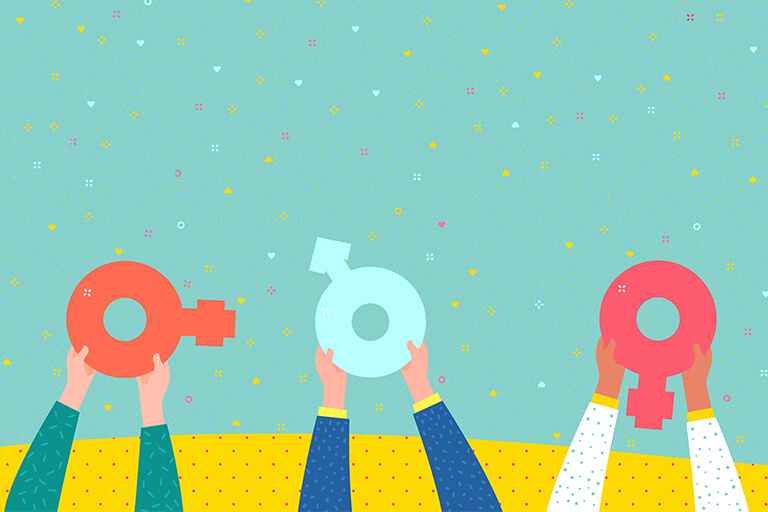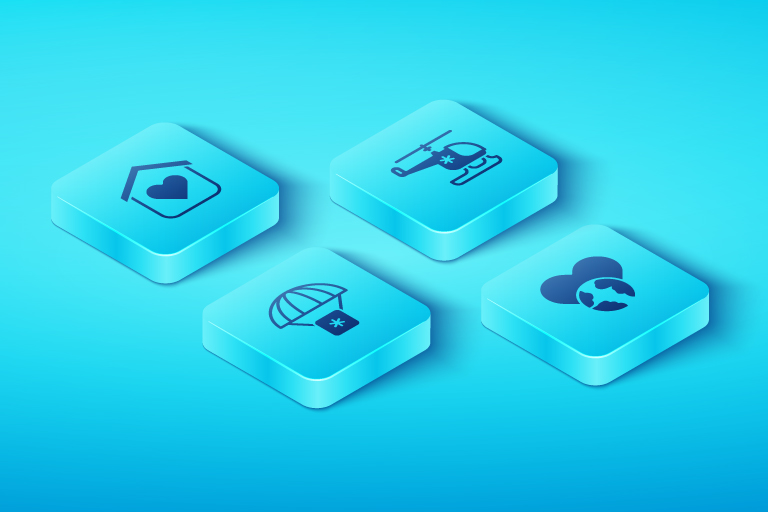We Need Female Entrepreneurs To Overcome The ‘She-cession’
Working women and female SMEs have been hard-hit by the pandemic. 3 steps can help ensure COVID-19 doesn’t reverse the progress we’ve made in gender equality so far.
There’s little doubt the COVID-19 downturn has adversely affected women, many of them in small businesses and start-ups across our region. The pandemic had a near-immediate effect on women. And as it continues to unfold, we’re yet to see the full, long-term impact. Women’s jobs remain almost twice as vulnerable as men’s in this pandemic, due to shouldering the burden for increased childcare or distance learning.
COVID-19 might have turned back the clock on women’s workforce participation and entrepreneurship - but the truth is many new ideas and businesses are being created, too. Workplace flexibility has created more diverse talent pools and new opportunities for women-led businesses. It also accelerated digital adoption and greater use of technology by women. In fact, these tumultuous times could provide the greatest opportunity for innovation-led growth we’ve had in decades.
COVID-19 might have turned back the clock on women’s workforce participation and entrepreneurship - but the truth is many new ideas and businesses are being created, too. Workplace flexibility has created more diverse talent pools and new opportunities for women-led businesses. It also accelerated digital adoption and greater use of technology by women. In fact, these tumultuous times could provide the greatest opportunity for innovation-led growth we’ve had in decades.

During times of continued challenge and ongoing change, we must snap into action. We have to ensure support for small business is targeted and gender-responsive. Our response must account for the unique challenges faced by female-owned businesses. We must make sure no one is left behind.
So how can we help entrepreneurs to not only stay in business, but thrive? These three basic steps can help female SMEs bounce back from the post-COVID ‘She-cession.’
1. Keep rebuilding - fast
When the pandemic broke, governments around the world injected financial stimulus into their economies to help businesses get back on the path to recovery. But the world has moved on in different ways. While regions like Europe, the USA, Australia and Singapore have put measures in place to return to near-normal, other markets like China, Hong Kong and Japan are still filled with businesses and livelihoods on pause due to ongoing distancing and prevention measures.
Recovery is not the same everywhere – and the economic downturn has taken its toll. More than 80% of female entrepreneurs in Asia-Pacific have been negatively impacted by COVID-19, with 77% selling fewer products and services. And as of last year, there were less women participating in the workforce than in 1988.
So how can we help entrepreneurs to not only stay in business, but thrive? These three basic steps can help female SMEs bounce back from the post-COVID ‘She-cession.’
1. Keep rebuilding - fast
When the pandemic broke, governments around the world injected financial stimulus into their economies to help businesses get back on the path to recovery. But the world has moved on in different ways. While regions like Europe, the USA, Australia and Singapore have put measures in place to return to near-normal, other markets like China, Hong Kong and Japan are still filled with businesses and livelihoods on pause due to ongoing distancing and prevention measures.
Recovery is not the same everywhere – and the economic downturn has taken its toll. More than 80% of female entrepreneurs in Asia-Pacific have been negatively impacted by COVID-19, with 77% selling fewer products and services. And as of last year, there were less women participating in the workforce than in 1988.

Yet on the upside, if we promote the value of women-led business, and that of female entrepreneurs, we have the potential to transform economies. Start-ups and small to mid-sized businesses are the engines that keep our economies running.
2. Re-define business connectivity
That’s why the second step is to re-define what future start-ups look like to offer support women entrepreneurs need to thrive. For women to compete, we must reduce the internet user gender gap further, and leverage e-commerce to tap new markets. Women-owned businesses still have difficulty accessing the full potential of e-commerce. Globally, only 15% of firms that export are led by women.
Participating successfully in cross-border e-commerce requires strong connectivity in both logistics support and technology. Digital differentiation is absolutely critical for female entrepreneurs, and Asia is at the very centre of how we reimagine this transformation.
There is an urgent need to build digital capacity for women entrepreneurs - from online payments to customer services and customs processes. One female-led luxury packaging company in the Philippines had to suspend operations during COVID-19 lockdown. But with the benefit of technology, and global supply chain connections, they continued to win new projects while running the business from home. Now they are looking to expand their client base to the Middle East.
2. Re-define business connectivity
That’s why the second step is to re-define what future start-ups look like to offer support women entrepreneurs need to thrive. For women to compete, we must reduce the internet user gender gap further, and leverage e-commerce to tap new markets. Women-owned businesses still have difficulty accessing the full potential of e-commerce. Globally, only 15% of firms that export are led by women.
Participating successfully in cross-border e-commerce requires strong connectivity in both logistics support and technology. Digital differentiation is absolutely critical for female entrepreneurs, and Asia is at the very centre of how we reimagine this transformation.
There is an urgent need to build digital capacity for women entrepreneurs - from online payments to customer services and customs processes. One female-led luxury packaging company in the Philippines had to suspend operations during COVID-19 lockdown. But with the benefit of technology, and global supply chain connections, they continued to win new projects while running the business from home. Now they are looking to expand their client base to the Middle East.

Even small companies can disrupt their thinking to create new business and production models. We can connect women to programs and policies that empower the next generation of entrepreneurs, helping them access markets and grow. We can support women-led firms by identifying and implementing the very best solutions so they can compete in home markets and in cross-border e-commerce. Remaining agile and flexible are keys to survival.
3. Re-think how women entrepreneurs can ‘break through’
In such a rapidly changing business environment, the third step towards recovery is re-thinking everything that has gone before. The pandemic is pushing us to work together in new ways to create ecosystem-wide innovation.
The gendered nature of entrepreneurship means support and finance networks are often targeted at men, so we need more gender-neutral tools and resources for women entrepreneurs. Organisations such as the Global Alliance for Mass Entrepreneurship (GAME) and the Impact Investment Exchange (IIX) are great examples of support and business connections. Not solely to overcome challenges women face in securing funding, but in figuring out how best to grow their business and reach velocity of scale.
The exciting thing is that women’s economic power is still growing. Women-owned companies account for more than 40% of registered businesses worldwide.
3. Re-think how women entrepreneurs can ‘break through’
In such a rapidly changing business environment, the third step towards recovery is re-thinking everything that has gone before. The pandemic is pushing us to work together in new ways to create ecosystem-wide innovation.
The gendered nature of entrepreneurship means support and finance networks are often targeted at men, so we need more gender-neutral tools and resources for women entrepreneurs. Organisations such as the Global Alliance for Mass Entrepreneurship (GAME) and the Impact Investment Exchange (IIX) are great examples of support and business connections. Not solely to overcome challenges women face in securing funding, but in figuring out how best to grow their business and reach velocity of scale.
The exciting thing is that women’s economic power is still growing. Women-owned companies account for more than 40% of registered businesses worldwide.

Take femtech – which ranges from fertility and pregnancy care to wearable devices, connected health services, and general wellbeing. Femtech is expected to grow into a $1.15 billion industry by 2025. Gender diversity in business is good for families, communities and economies – as women do better, we all do better. This next generation of entrepreneurs know that catering to female consumers makes good business sense.
Action required: progress is on the line
We know women have juggled multiple roles during the pandemic. As we re-imagine and re-build business models for recovery, we have to re-think ways to remove gender disparities and barriers to work. We must work together to increase the economic participation of women in the workforce and in entrepreneurship.
McKinsey forecasts an additional $13 trillion could be added to global GDP in 2030 – but only if we act fast. There are real concerns that if we don’t take action now, all the gains made towards gender parity in recent years will be wiped out at an economic cost in the trillions. We simply can’t afford to wait.
Action required: progress is on the line
We know women have juggled multiple roles during the pandemic. As we re-imagine and re-build business models for recovery, we have to re-think ways to remove gender disparities and barriers to work. We must work together to increase the economic participation of women in the workforce and in entrepreneurship.
McKinsey forecasts an additional $13 trillion could be added to global GDP in 2030 – but only if we act fast. There are real concerns that if we don’t take action now, all the gains made towards gender parity in recent years will be wiped out at an economic cost in the trillions. We simply can’t afford to wait.
***



















 The Latest
The Latest